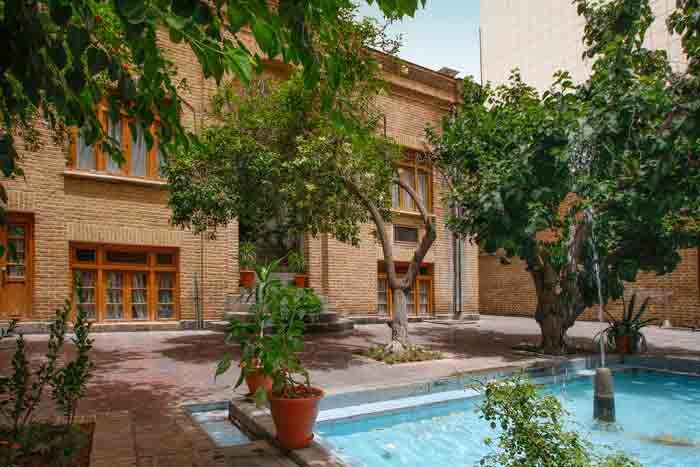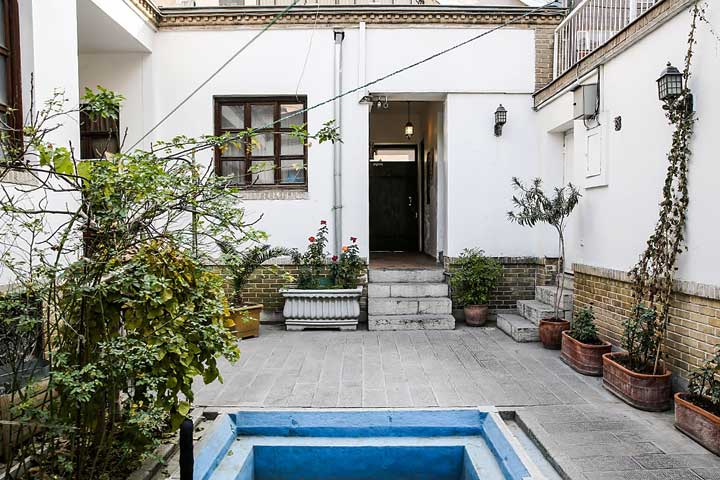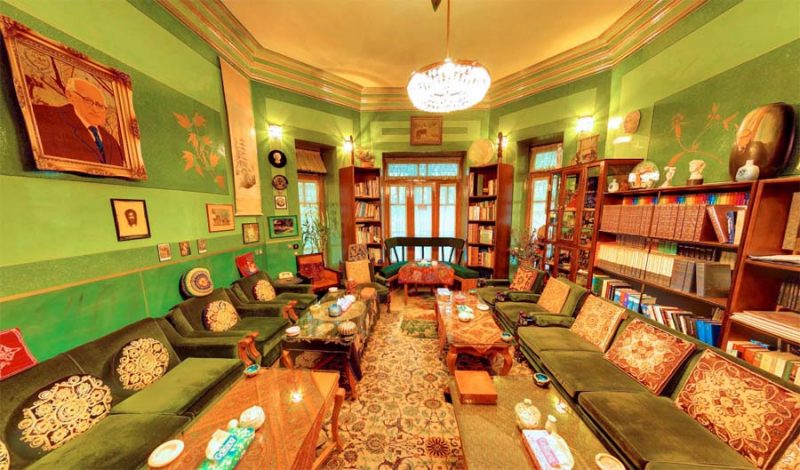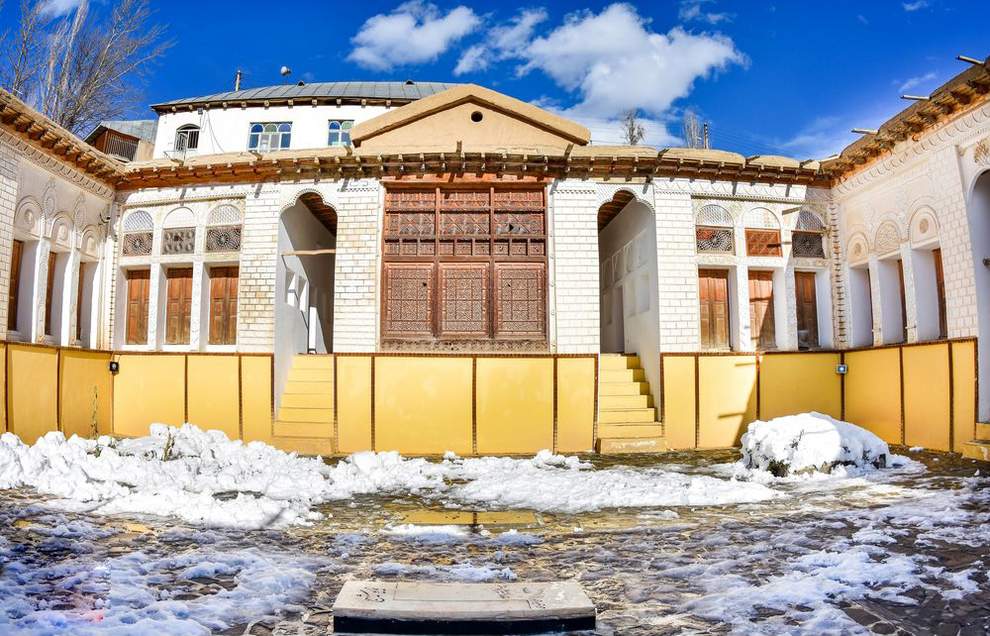Museum Houses of Iran

Bell Spring
December 12, 2020
Alamut
April 21, 2021In this Blog We will introduce you to the most famous Museum houses in Iran :
Simin & Jalal Museum House

There is a beautiful house in an impasse on Dezashib Street in the north of Tehran, which was previously inhabited by the great figures of contemporary Iranian literature, and after many years, their works are still published. Simin Daneshvar and his husband Jalal Al-Ahmad are two Iranian writers and translators who have left many works and have created a new way in the history of Persian literature.
The Jalal and Simin House Museum is actually this couple’s personal home, built by Jalal Al-Ahmad while his wife Simin was studying aesthetics at Stanford University. The construction of this house itself has a story that has become one factor that makes this museum attractive.
Jalal himself was directly involved in the construction of the house. In letters he sent to his wife, he described the pain in his hands as he carved stones. What is clear in each brick of this house is that this house was built with love. The decoration of this house is still the same as when its original owners lived there.
Another attraction of this museum is that this house’s decoration is still the same as when its original owners lived there. Also, in this museum house, all the works written and translated by these two authors are collected.
Dr. Moin Museum House

Mohammad Moin is one of the prominent researchers and creators of one of the most important Persian dictionaries, namely Farhange Moin. He had an honorary doctorate from several foreign universities and was a member of the Iranian Academy. Dr. Moin was fluent in French, English, Arabic, and German, and was familiar with the Avesta Pahlavi languages and ancient Persian, and some local dialects.
This great man fainted in one of the rooms of the Faculty of Literature in 1345 due to a lot of study and research work and fell into a coma.
Dr. Moin Museum House is a relic of this great master of Persian literature on Piroozi Street in Tehran. This house has been merged with the house next to it, which belongs to the famous Iranian poet and composer Mohammad Ali Amir Mojahed (Dr. Moin’s father-in-law).
The house is built in the style of large villas of the Pahlavi era, and one of its unique attractions is the regular holding of literary meetings such as Ferdowsi and Rumi’s meetings. The library of Dr. Moin Museum House is another interesting part of this building which has 700 members and 50 people visit it daily. This house is also used as a location for famous films. You can visit this museum every day from 10 am to 4 pm.
Saba Museum House

Abolhassan Saba (1281 in Tehran – 1336) was a famous Iranian music teacher, composer, and musician. He is one of the most prominent figures in Iranian music in the last seventy years. After the death of Professor Abolhassan Saba, according to his will, his house was turned into a museum on November 20, 1974. Saba Museum is his residential and ancestral home, which was bought by his father, Abu al-Qasim Khan, a physician at Nasser al-Din Shah’s court.
The establishment of Saba House in the form of a biographical museum has been to commemorate Saba and honor his valuable heritage in Iranian music.
This house has five rooms, a basement, and a small yard. Part of the museum is dedicated to the professor’s pictures, personal belongings, and official documents and correspondence.
The second part also includes a collection of museum instruments that are unique in terms of antiquity and value. The third and final part of the museum also belongs to the collection of works of Ms. Esfandiari Kuh-e Noor, the wife of Saba, who was the cousin of Nima Yoshij. It is with such sections that this museum becomes a precious part of the history of Iranian music.
Dr. Hessabi Museum House

Professor Dr. Mahmoud Hesabi is a prominent figure in contemporary science and culture and the founder of modern Iranian physics. Shortly after his death, his house became a museum displaying his personal belongings, academic credentials, badges and certificates, and old photographs, as well as the text of speeches and writings.
Dr. Hesabi Museum House belongs to the first Pahlavi period, namely Reza Shah, which is more than 80 years old. This building was built by a Russian architect named Victor and belongs to the late Qajar period and the early Pahlavi period.
Buildings such as workshops and laboratories were later designed by Dr. Hesabi. He lived in this house for the last 40 years of his life. For this reason, he designed spaces such as workshops and laboratories to have space for his research in the space where he lived.
There is a very spectacular museum of all of Dr. Hesabi’s personal belongings, including his clothes, glasses, watches, and other items, as well as certificates and commendation plaques from the various countries he has received. Also, Dr. Hesabi, due to his interest in birds and keeping different species of them, has designed a space in the garden of his house in the middle of the yard, which is for keeping those birds.
Shahriyar Museum House

Seyyed Mohammad Hossein Behjat Tabrizi (born 11 December 1285 – died 27 September 1988) alias Shahriyar (formerly Behjat Tabrizi) was an Iranian poet from Tabriz who wrote poetry in Persian and Azerbaijani. He was born in Tabriz and according to his will was buried in the Tomb of the Poets of Tabriz. September 17 has been called “Persian Poetry and Literature Day” due to the day of his death.
Today, the house of this precious poet welcomes those interested in Iranian history, culture, and literature. The current building of the museum is the third house of Shahriyar, which was purchased by him in 1347 (SH), and he has lived in it for the last twenty years of his life.
In total, more than 500 pieces of Master Shahriyar’s personal belongings such as books, bags, canes, printed works, notebooks and manuscripts of his works, Coranic versions written by him in Naskh script, stationery and living accessories, Photo albums, and domestic and foreign gifts of this wise and prudent poet have been exposed to the public.
Parvin Etesami Museum House

Rakhshandeh Etesami, better known as Parvin Etesami (born March 16, 2012, in Tabriz – died April 6, 1961, in Tehran) is an Iranian poet who has been described as “the most famous female poet in Iran.” Parvin learned Persian, English, and Arabic from her father as a child, and from that age, she began composing poetry under the supervision of her father and masters such as Dehkhoda and Malekalshoaraye Bahar.
Parvin Etesami’s house is located in Tabriz and belongs to the first Pahlavi period. This house has been nationally registered today. Parvin Etesami lived in this house until she was 7 years old. Upon entering this house, a beautiful garden and a pool in the middle of the house will catch your eye. A little further on, you will encounter a brick building where you will see a statue of Parvin ascending the stairs.
The total area of the house is 1,300 square meters, which since its opening until today has become a permanent exhibition center for the General Directorate of Cultural Heritage, Handicrafts, and Tourism of East Azerbaijan. Visiting this museum is open to the public.
Nima Youshij Museum House

Ali Esfandiari, better known as Nima Yoshij (born November 12, 1276 – died December 4, 1980) was a contemporary Iranian poet. He is the founder of modern poetry and is nicknamed the father of modern Persian poetry.
The house in which Nima Yoshij was born and today his grave is in the middle of its courtyard is a Qajar house with the architectural style of that period, which was built with clay, mud, and wood. The house has three entrances and many rooms around the courtyard, which today has been turned into a museum.
Inside the rooms of the house are some of Nima Yoshij’s personal belongings, including pens, lamps, glasses, firecrackers, clothes and shoes, photo frames of Nima and his family, and some of his manuscripts. This building has been registered and protected as a national monument under number 1802 by the Cultural Heritage Organization. Visiting Nima’s house is open to the public.
